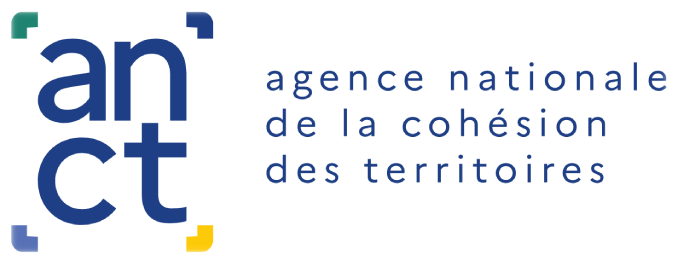Foreword
Contrary to popular belief, quantitative surveys and social science research confirm young people's interest in current affairs. Three recently published surveys paint a picture of young people's information practices in the age of digital platforms and social networks.
- The Youth Barometer sheds light on the effects of age, gender and qualifications on these information practices.
- According to the survey on the French and information carried out on behalf of Arcom (Autorité de régulation de la communication audiovisuelle et numérique), which looked at the information practices of teenagers, while the practices of 15-19 year-olds are "more distanced, less frequent and less expert than those of their elders, they do not seem less well informed than adults ".
- A survey carried out in Normandy among Première students to assess their relationship with "misinformation" and their practices in verifying information: focusing on vocational streams and the working classes, this survey confirms that information practices differ significantly according to social background.
Laurence Courroy and Anne Cordier, both researchers in Information and Communication Sciences, have been working for several years to understand the information practices of young people. They question recurring prejudices about young people who are disconnected from current affairs, who abandon the press and traditional media to focus solely on content disseminated via social networks.
7 out of 10 young people regularly follow the news
The Baromètre sur la jeunesse, a survey of 4,500 young people aged 15 to 30, conducted for the Direction de la jeunesse de l'éducation populaire et de la vie associative (DJEPVA) and the Institut national de la jeunesse et de l'éducation populaire (INJEP), explores the variety of news practices of young people aged 15 to 30 in 2024. How often do young people follow the news? What themes do they consult: sports, politics, social issues, news, culture and the arts? Why do they stay informed? Social networks, television, search engines, press... What sources do they use?
Between the ages of 15 and 30, the majority of young people have kept up to date with the news several times a week or even every day over the past 12 months (this concerns 7 out of 10 young people aged 15 to 30), significantly less than their elders (9 out of 10 over 30s).
Not all young people keep themselves informed with the same regularity. The importance attached to news during childhood or adolescence within the family has a lasting and clear influence on the frequency with which news is consulted. Daily news coverage rises sharply with age: between 15 and 17, nearly 3 in 10 young people say they read the news every day, while this is the case for 4 in 10 young adults (25-30).
Education has a significant effect on the frequency with which news is followed. Young adults with higher education qualifications are more likely to keep up to date with the news on a daily basis: 48% among 25-30 year-olds, compared with 39% among 25-30 year-olds with a degree or less. "The correlation observed between diploma and frequency of news viewing could be partly the result of habits acquired during higher education, with certain training courses requiring assiduous media viewing. It could also be the result of socialization to the news, with the most highly educated being more represented among those who were socialized to the news during childhood or adolescence".
Gendered interests. News, as perceived by 15-30 year-olds, covers a wide range of themes. Among the fourteen news topics on offer, young people say they are most often drawn to sport (45%) and news (39%), followed by national politics (35%), the environment and climate (34%) and international politics (33%). Young people's interests are, however, highly gendered. Sports information, followed by mechanics, cars and motorcycles, and science and technology are of greater interest to young men. For their part, young women are far more frequently interested than young men in news, followed by fashion and beauty, health and well-being, social issues (education, families, housing, justice...), celebrity life and celebrity topics.
The practices of young adults (25-30) differ from those of teenagers (15-17). The former are interested in a wider range of subjects than the latter, as reflected in their interest in politics, the environment, social issues, the economy, science and technology or health. "Young people's interests broaden as they enter adulthood, partly because their tastes evolve, and partly because it is undoubtedly easier to decipher these subjects at a later age".
Référence :
Getting informed, above all, out of curiosity and to understand the world
The " desire to learn things and understand the world around them" is is the primary motivation for 15-30 year-olds (64%) to follow the news, according to the Youth Barometer. For the over-30s, following the news is first and foremost a way of satisfying curiosity and learning, as well as a way of stimulating discussion with others. On the other hand, younger people perceive the news more as a form of entertainment or hobby than those over 30: "to have fun, to pass the time" is the third most important motivation for 15-30 year-olds (37%, versus 22% for those over 30), particularly among young men, the least educated and those still studying.
While the over-30s prefer television to keep abreast of the news, social networks are the main source of information for half of 15-30 year-olds (53%). Among them, teenagers (15-17) and those interested in celebrity and celebrity-related topics, or cultural and environmental issues, are the most likely to use social networks for information, in descending order: Instagram, TikTok and specific YouTube video sites dedicated to decrypting the news.
"Following social networks does not prevent young people from taking a critical look at them". The majority of them consider that they "spread much more false information than other media (television, radio, press...)". In fact, in addition to social networks, young people use other complementary sources of information, such as television, specific websites and discussions with friends and family. In fact, it's "by comparing what several media say (television, radio, press, etc.)" that 4 out of 10 young people manage to form an opinion on a subject that is the subject of debate in society.
Television continues to occupy an important place in young people's daily lives, including in their information practices. Young people interested in national and international politics are particularly keen on watching the news, while those following national politics and the economy get their information primarily from all-news channels.
Search engines and news portals are used more by young people seeking information on a wider range of subjects: science and technology, mechanics, cars and motorcycles, health and well-being, and news. The 100% video media (Brut, Konbini, Loopsider, Melty, etc.) are more popular with those seeking information on celebrity life and celebrity topics, travel and gastronomy, and international politics.
Finally, discussions with friends and family also enable young people - teenagers more than young adults - to keep abreast of current events: almost 20% of young people mention discussions with friends and family as a way of keeping abreast of current events.
Between the ages of 15 and 30, the majority of young people are regularly informing themselves on an increasingly wide range of subjects, using a variety of information sources and media (online, offline, exchanges).
" These multiple practices contradict the idea that they are "less curious" or that social networks impoverish their culture. Thus, youth is a period of learning about informational practices that remain partly shaped by those of their family, their gender or their level of education. ".
Young people's distanced information practices, composite confidence and avoidance strategies
In 2024, Arcom (Autorité de régulation de la communication audiovisuelle et numérique) undertook a survey of French people's relationship with information. According to this survey of 3,356 people aged 15 and over, the French have a close relationship with information: 94% say they are interested in information, and the same proportion keep themselves informed on a daily basis. The Arcom study reveals that the French feel fairly well informed on the subjects that interest them. Despite this interest, information overload leads a majority of them to adopt avoidance behaviors (changing TV channels or radio stations, suspending app notifications).
These avoidance strategies are, however, more radical among 15-25 year-olds: "They avoid all-news channels, debates on potentially divisive subjects. If the headlines are too negative, they zap (don't read the article, change channel, scroll...). They disconnect either from a particular subject (e.g. wars), or from news in general".
The authors of the survey looked more specifically at the teenage segment. Although 15-19 year-olds are less interested in political and general news than adults, they still keep themselves informed "to understand the world around them, to educate themselves and to keep abreast of major events. They need to 'get the story', especially when it comes to 'celebrity' news, which is of particular interest to them (35% vs. 24%)".
Teenagers get their information mainly from social networks (44% vs. 18%) and video platforms (34% vs. 10%). These video platforms (YouTube, Instagram and Tiktok) meet their expectations: "very short formats (under 5 min) and in video". They are more likely than the rest of the population to consult Brut (33% vs. 22%), Kombini (27% vs. 18%) or Hugo Decrypte (29% vs. 11%).
Hugo Décrypte is fairly emblematic of the 15-19 age group's relationship with information, their expectations and their need for reference points: "a strong presence on social networks, fast, accessible and up-to-date information".
" As citizens-in-training, young people are seeking and creating their bearings in this information-driven world. Their confidence is composite. For them, more than for others, the fact that a piece of information is picked up by the media (33% versus 23%), or that those close to them talk about it (20% versus 10%), are guarantees of reliability. However, they also trust content creators (41% vs. 24%) and celebrities (37% vs. 27%) more than the average.
"Overall, despite having more distanced, less frequent and less expert information practices than their elders," conclude the study's authors, " 15-19 year-olds don't seem any less well-informed if we consider their results on the quiz " ( four quiz-type current affairs questions were used to test the level of information on current affairs). They are also "less permeable to conspiracy theories than the rest of the population".
Référence :
Media trust and verification practices among 16-17 year-olds vary according to social background
The survey conducted by Sophie Jehel, Professor of Information and Communication Sciences (Paris 8 University) and Jean-Marc Meunier, Senior Lecturer in Cognitive Psychology (Paris 8 University), in collaboration with the Centre de Liaison de l'Enseignement et des Médias d'Information (CLEMI) and the Observatoire des pratiques numériques des adolescents en Normandie (OPNAN), aimed to assess the relationship between students in Première (general and vocational streams) and misinformation, and their practices in verifying information. With regard to vocational streams and the working classes, this survey (following on from numerous other studies) tends to show that information practices differ significantly according to social origin.
According to the survey, 98% of first-year students (88% aged 16-17) have smartphones, and use a variety of news sources. Nearly half have downloaded a news application. They favor two sources of information: social networks (especially Instagram stories) and television. Television is the primary source of information (for 43% of them), with the news also the source they consider most reliable.
In the vocational streams, first-year students show greater distrust of the media and television (23%), and greater confidence (albeit relative, 14%) in social networks.
At the same time, information is received by individuals on social networks and by families on television: conversations with family and friends play a major role in interpreting information and updating knowledge, particularly in more privileged environments.
" Contrary to the myth of the "digital natives" and the common perception that teenagers will post anything on social networks, the majority of teenagers say they are cautious when it comes to sharing their "opinions" on digital platforms.. 70% never do. Girls even less so (74%). The most cautious or silent are the children of entrepreneurs and farmers (79%). When teenagers do share their personal opinions, it's infrequent anyway (only 4% share them often)".
The survey also aimed to find out whether teenagers were familiar with conspiracy theories. "This open-ended question did not elicit many responses, with almost one in two young people either not answering or saying they were not familiar with it. Girls, and students in vocational courses, are further removed from these issues". The two most frequently cited conspiracy theories are the Platist theory (according to which the earth is flat) and the Illuminati - a sect that is supposed to rule the world. Other theories such as extraterrestrial and reptilian conspiracies, or "walking on the moon" are cited more marginally. "Teenagers don't feel particularly exposed to conspiracy theories: half of those surveyed knew nothing about them. For some, it's their IME courses that will introduce them to these theories," observe the survey's authors.
Information verification: 3 different profiles
The survey distinguishes three profiles regarding their information verification practices:
- a first profile of young people who prefer a media approach, and the trust they place in it;
- a second profile for those interested in the formal dimension of content (author's signature, title);
- a third profile for those who are primarily interested in content coherence.
" The media and reputation approach is more prevalent among working-class children (49%), while the formal qualities approach is more common in more privileged environments (54%).. The coherence approach does not seem to be socially determined: it would seem to be linked to a greater habit of discussion with adults outside the family".
A positive assessment of media and information literacy (MIE)
According to the students' statements, it was in the second year of secondary school that they mainly benefited from EMI courses (68%), and to a lesser extent in the third year (11%). They would like to see this learning reinforced in junior high school, but without diminishing it in high school. The assessment of students who have taken part in this type of EMI session is particularly positive: 90% of pro students think that the courses have helped them to be better informed, to spot fake news and to be more vigilant about what they publish themselves; 61% of GT students think the same. " Adolescents particularly appreciate educational scenarios that take into account their experience and enable them to carry out personal documentary research," conclude the authors.
This study was commissioned by CLEMI (Centre de Liaison de l'Enseignement et des Médias d'Information). It is the fruit of cooperation with the CEMEA (Centre d'entraînement aux méthodes d'éducation active) as part of the "Éducation Aux Écrans" training program in the Normandy region.
Référence :
Anne Cordier: " Young people take advantage of information resources that adults often overlook ".
In Grandir connectés : les adolescents et la recherche d'information, Anne Cordier, University Professor in Information and Communication Sciences (Centre de recherche des médiations laboratory - Université de Lorraine), looks at the relationship between teenagers and information. Based on research carried out in schools, she questioned the recurrent prejudices about young people and social networks, and the fears of these digital natives who have grown up with the Web: " their relationship with screens and information is far more complex than the term 'digital morons' once used to describe them implies". In Grandir informés : les pratiques informnelles des enfants, adolescents et jeunes adultes, Anne Cordier continues her interviews with these teenagers turned young adults, showing how their information practices have evolved, and the difficulties they encounter in this area.
" Contrary to popular belief, and confirmed by studies that are vague and purely declarative, children and teenagers do inform themselves. They find out about their interests and hobbies, but also about social issues that are important to them ". For Anne Cordier, in TheConversation, "these generations take advantage of information resources that often escape the adult gaze, such as Hugo Décrypte, which is highly popular with high-school students, or regional or national press titles, whose publications they follow via digital social networks. Andlet's not forget content creators, who play an important role in the information ecosystemof young audiences, particularly when it comes to feeding their curiosity about documentary information (on health, sexuality, physics or cinema).
Advocating media and information education (MIE), she stresses that these informational practices "need support: children and teenagers alike appear to be very keen on support in this area, aware in particular of the difficulty of evaluating information in a generalized context of mistrust, or dealing with the reception of violent images online. They are also keen to further develop their information skills "to succeed in life".
" Long-term studies and field surveys in schools show that it is difficult to establish a progression of learning in media and information literacy.. The time devoted to information in the classroom, to its analysis and discussion, is too sporadic. It takes time to integrate information learning into a media and documentary environment that is complex to say the least, to understand essential concepts such as information authority and editorial line, and to develop a culture of sources.
For CLEMI (Centre de Liaison de l'Enseignement et des Médias d'Information), Anne Cordier has just carried out a comprehensive analysis of practices with teenagers (aged between 11 and 19). The study revealed that "teenagers enjoy being informed, despite the anxiety of current events. Unanimously, they accept the recommendations of the platforms' algorithms, which they perceive as helping them to stay informed. This study recommends the implementation of an active IME, capable of creating spaces for dialogue anchored in young people's daily lives, and which emphasizes the joy and opportunity of information and civic responsibility. ".
Références :
Laurence Corroy: "Not reading the press or listening to the radio doesn't mean you've given up on current affairs".
"It's common to read that young people no longer care about current affairs, that they're abandoning traditional media to focus on content disseminated by digital social networks," notes Laurence Courroy, University Professor (University of Lorraine) in Information and Communication Sciences, in The Conversation. " In these statements, often in the form of lamentations, several approaches are confused. Not reading the press or listening to the radio doesn't mean giving up on current affairs".
Whereas previous generations developed preferences for one title or another, today's young people consult one or the other relatively indifferently. "When questioned, high-school and university students alike struggle to identify the editorial lines of daily newspapers or their political leanings. What interests them is journalistic information, rather than whether it comes from Le Monde, Libération or Le Figaro. They don't consult a daily for its positioning, but for the guarantee of quality it represents.. In this way, the major newspapers function globally as reference "brands".
For teenagers, as for young adults, the break with previous generations lies in the digital use of information: digital social networks are their gateway to news, in particular YouTube, Instagram and Twitter, but also Spotify and TikTok to a lesser extent.
"The brief forms used on these networks echo the relationship that young people themselves have with the written word, through text messaging and emojis. The way in which messages are presented in images is appreciated, as is the possibility of sending information to contacts, possibly with one's own comments, which enables them to adopt a more active stance towards information".
While senior citizens remain very attached to the printed press, "young people often find it difficult to read, sometimes abstruse and expensive (...) Being continuously informed via social networks can provoke anxiety about the world's disorders. We could talk about 'informational stress', caused by being informed all the time".
" Finally, it's up to journalists and traditional media to think more about young people," concludes Laurence Courroy. "Laurence Courroy concludes, "by giving them a voice, by covering subjects they feel close to: ecology, gender issues, parity... Journalists' participation in Press Week at school is also a way of raising awareness of the press and the diversity of the media on offer, and of its importance in invigorating democracy".
Référence :
Sources
1. Young people's relationship with information in 2024: Results of the DJEPVA youth barometer
2. Arcom: French people's relationship with information, March 2024
3. Information practices of teenagers 2023: Disinformation & information verification
4. Anne Cordier: for everyday media and information literacy
5. Anne Cordier: when teenagers talk about smartphones (CLEMI study)
6. Laurence Corroy: Have young people abandoned traditional media for information?










